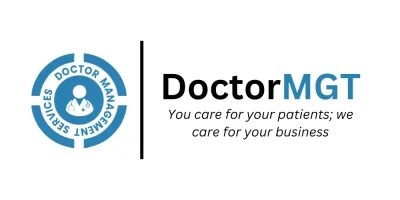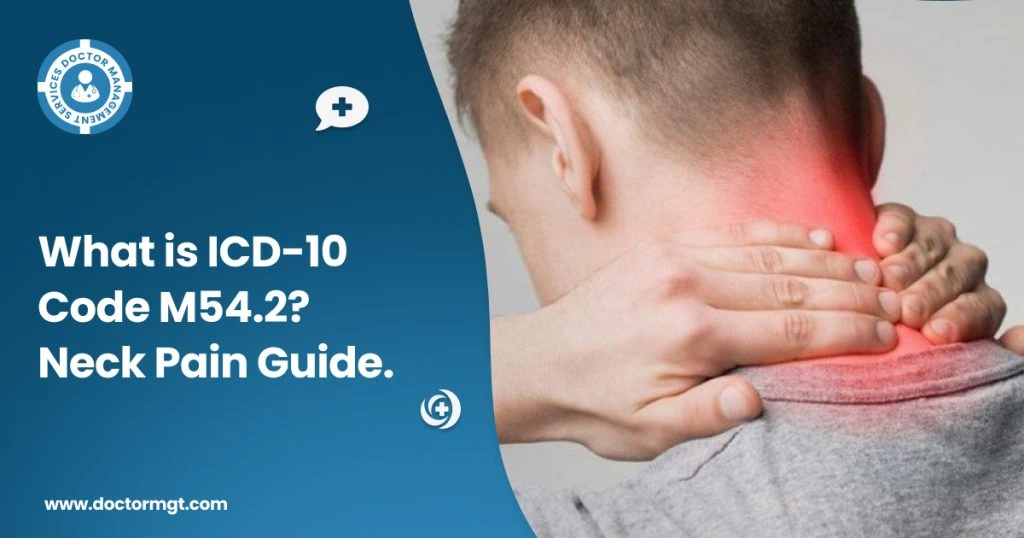Neck pain is a common musculoskeletal complaint worldwide. Typically, the ICD-10 code M54.2, “Cervicalgia,“ refers to pain or limitation of movement in the cervical spine. For the U.S. doctors, it is vital to report the condition of cervicalgia without any mistakes to maintain smooth workflow and accurate claim filing.
In this blog, we learn about the causes and symptoms of cervicalgia, its diagnosis, the significance of precise coding, some related codes, and its link to pain management in medical billing.
Let’s break it down into simple, actionable insights.
What is Cervicalgia?
The term “cervicalgia” refers to neck pain that comes from several different causes, such as incorrect posture, muscle strain, or underlying health problems. This type of pain is typically in the back and sides of the neck and can often spread to the shoulders or arms in some cases. Patients may describe the condition as dull, sharp, throbbing, or tight, depending on the cause.
Doctors and insurance companies use the ICD-10 code M54.2 to manage and track cervicalgia. It makes medical data consistent. It also assists providers in making proper diagnoses and insurance companies in handling claims more efficiently.
Causes of Neck Pain
Muscle strain is the main cause of neck pain. The reason for such strain would be terrible posture, the excessive use of mobile phones, or frequent lifting of heavier objects. Osteoarthritis is a significant contributor to neck pain. Herniated discs and improper ergonomic practices at workplaces are also common causes.
Neck pain, which falls under code M54.2, may also stem from trauma such as whiplash resulting from car accidents. Various factors, including degenerative diseases, nerve compression, and inflammatory diseases like rheumatoid arthritis, can cause chronic pain. Accurate testing is essential for the detection of the cause of cervicalgia.
Diagnosing Cervicalgia
To offer a certain diagnosis, providers often take detailed patient histories, conduct physical examinations, and perform imaging tests such as X-rays or MRIs. These methods not only inform but also confirm the root causes of the issue. It can be a soft tissue affliction, nervous system problems, or a degenerative cervical disc.
The M54.50 diagnosis code is an indispensable part of specifying conditions with spinal pain. During the diagnosis process of cervicalgia, doctors use this code along with related ones to specify more detailed classification and documentation.
The initial indicators of cervicalgia are…
- Persistent stiffness in the neck
- Limited range of motion
- Pain that worsens with certain movements
- Tenderness when the neck is touched
- Tingling or numbness in higher cervical regions
When You Need Alternative ICD-10 Code For Neck Pain
Any disease of the intervertebral disc in the cervical spine may be responsible for pain in the neck. If that is your patient’s issue, you may as well go with one of these codes. The ICD-10 codes for neck pain listed here are too vague for billing; however, after clicking the links, you will be able to find some specific codes that you can use.
| Code | Condition |
| M50.0 | Cervical disc disorder with myelopathy |
| M50.02 | Cervical disc disorder with myelopathy, mid-cervical region |
| M50.1 | Cervical disc disorder with radiculopathy |
| M50.2 | Other cervical disc displacement |
| M50.3 | Other cervical disc degeneration |
| M50.8 | Other cervical disc disorders |
| M50.9 | Cervical disc disorder, unspecified |
Besides degenerative diseases with disc disruption, these are other additional codes that you could apply in the case of neck pain:
| Code | Condition |
| M48.02 | Spinal Stenosis, cervical region |
| M47.12 | Other spondylosis with myelopathy, cervical region |
| M47.13 | Other spondylosis with myelopathy, cervicothoracic region |
| M47.22 | Other spondylosis with radiculopathy, cervical region |
| M47.23 | Other spondylosis with radiculopathy, cervicothoracic region |
| M47.812 | Spondylosis without myelopathy or radiculopathy, cervical region |
| M47.813 | Spondylosis without myelopathy or radiculopathy, cervicothoracic region |
| S16 | Injury of muscle, fascia and tendon at neck level |
Pain Management and Medical Billing: A Vital Connection
Pain management is a fundamental aspect of treating cervicalgia. A good number of patients require care that is ongoing and fine-tuned to their condition. The services vary from multidisciplinary pain management plans that include many components to regular check-ups that ensure the right treatment paths are taken to achieve quality results.
In pain management medical billing, documenting the services for treatment of cervicalgia is very important. This documentation is the key to the right billing and on-time remuneration. Proper coding of therapy sessions, imaging studies, prescriptions, and surgical treatments is crucial for successful claims.
Accurate coding improves the likelihood of claim approval. In contrast, mistakes or neglect may lead to the loss of claims or delays in getting refunds. No less important is the identification of the M54.2 ICD-10 code, which ensures compliance with the diagnostics.
Hence, the communication flow among healthcare providers, healthcare billing teams, and insurance companies becomes more efficient thanks to the shared language of codes.
Enhancing Patient Outcomes
Patient education is key in preventing recurring neck pain. Correcting lifestyle and posture habits is one of the most effective tools to reduce cervicalgia episodes. Some helpful recommendations include:
- Reducing screen time and maintaining eye-level with devices
- Regularly engaging in neck-strengthening exercises
- Practicing good sleeping postures with ergonomic pillows
Timely follow-ups with specialists also help track progress. Addressing minor issues early on can prevent the development of chronic ailments associated with untreated cervicalgia.
Understanding Lien Negotiations in Complex Cases.
The services of a lien negotiator become absolutely necessary when injuries from accidents, such as car accidents, manifest. Typically, they act as intermediaries between healthcare providers and patients, negotiating large sums of money that are ultimately the patient’s responsibility. Consequently, the patients can still get the needed medical help even though they have limited financial resources.
For insurance claims, it is the medical billing staff who have to contact the lien negotiator. The purpose of this is to guarantee proper reimbursement to the provider and to ensure the patients’ cure. This unique association tends to fill financial voids, and in this way, it optimizes the palliative care regime.
Why Accurate Coding is Important
Using the correct ICD-10 code, like M54.2, can speed up payment turnaround, which ultimately reduces billing errors. Eliminating old or mismatched codes, which often accompany a lack of systematized documentation, can easily prevent problems. Therefore, the medical billing team must ensure they are using the correct diagnostic and treatment codes.
Key Takeaways
Although M54.2 is the ICD-10 code representing cervicalgia, it is still a commonplace ailment, which can be effectively managed by treatments. Treating the condition holistically, i.e., by addressing it through physical therapy, prescription medications, or lifestyle changes, will ensure the patient will experience better outcomes.
Exemplarily, the collaboration of health providers and lien negotiators who are clearly aligned on using billing codes for pain management can result in a significant increase in the approval rate of one’s claim(s) for compensation. The health care team, by being proactive in their approach while staying updated, will be able to meet patients’ needs and solve problems faster.







